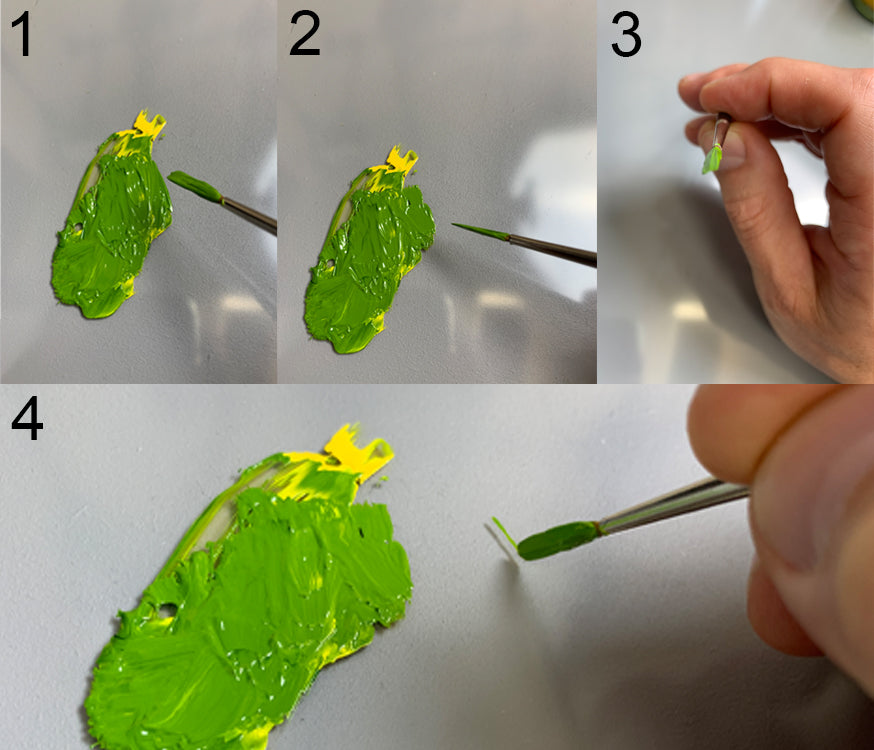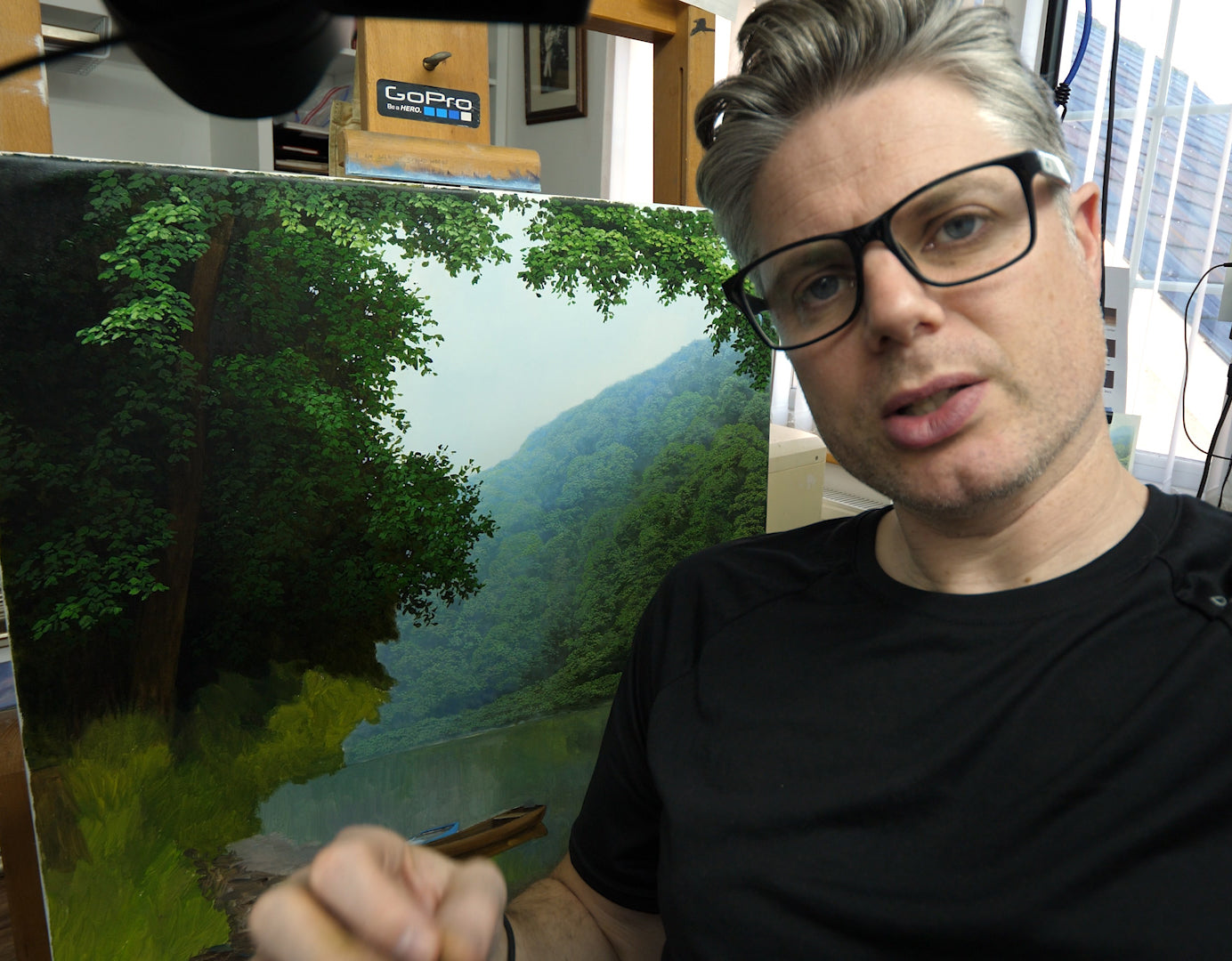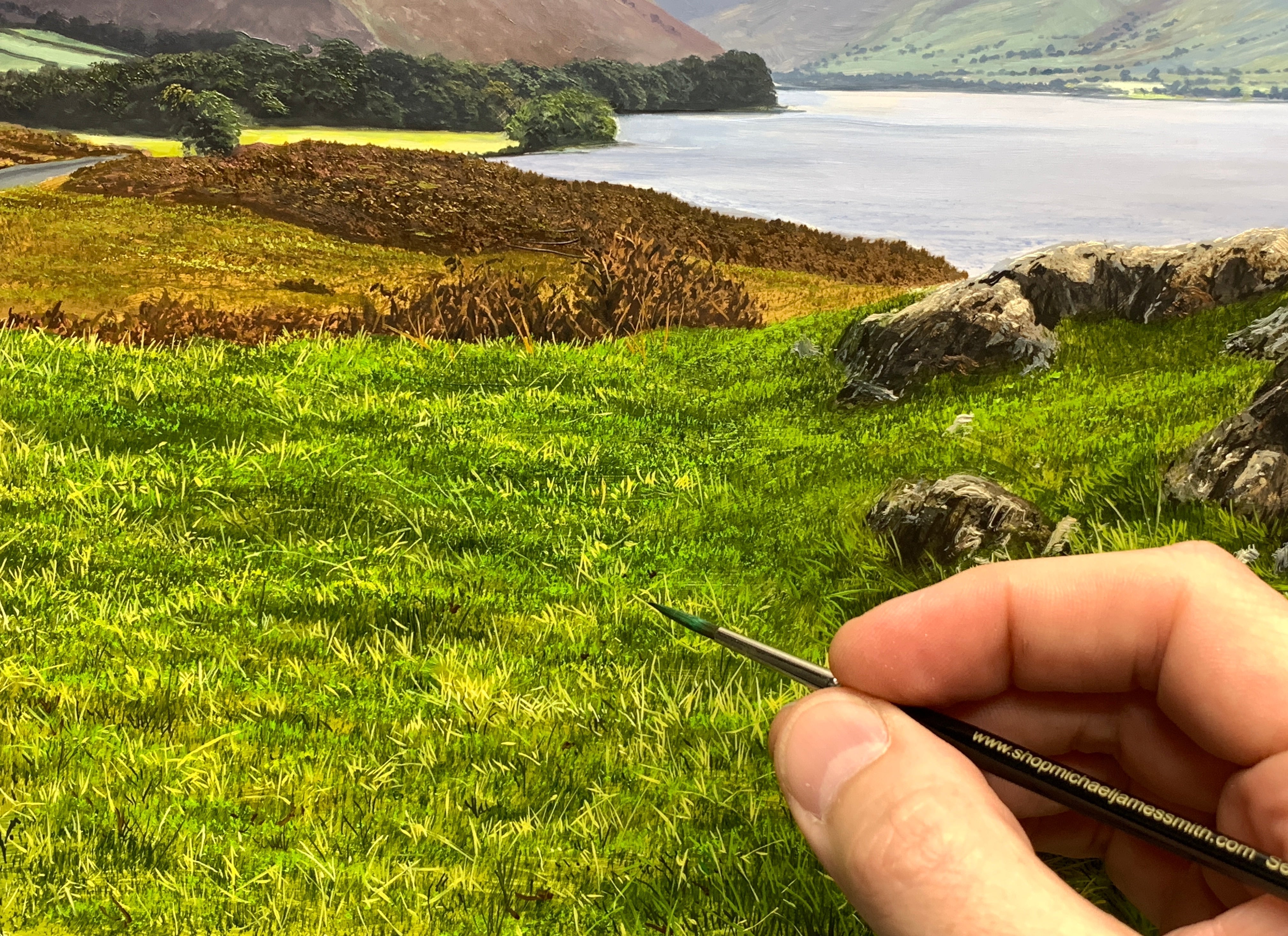
Frequently asked questions | Technique
How much time do you allow to pass between your blocking in layer and the following layers?
The time required between the block-in layer and the oil detail layers to complete a painting depends on the medium used for the block-in. If acrylics are used, then a few minutes only. If alkyd fast drying oils are used, perhaps hours or the next day depending on the colours used. If regular oils are used, then a lot depends on the mediums used. i.e. Liquin and white spirit help the paint to dry quicker; linseed oil can take many days to a week depending on other factors such as ambient temperature and humidity. The painting should be very dry to the touch before the detailed oil layer is started.
How much paint do you put on your brush?
It depends entirely on the effect you’re trying to create. At times I can paint quite a few strokes before needing to reload, while other times I reload after only 2-4 strokes. I typically aim for very thin layers, similar to if the paint had been airbrushed on. The only paint “standing proud” from the surface would be the final highlights. In general I thin my paint so that it flows on the surface easily.
How do you paint trees using oils?
On MJS Tv I have several tutorials which include how to paint a tree. These include, 'How to Paint a Landscape' and ‘How to Paint a River’ which both have distant and mid-ground grouping of trees and one large foreground tree. The ‘How to Paint a Winter Tree’ tutorial has distant trees across a lake and one winter leafless tree. The 'Winter in Austria' has distant trees on a mountain and in the valley, closer hills of trees and foreground pine trees with snow. Each tutorial provides step-by-step instructions for making them appear photorealistic. Future tutorials will be covering different types of trees. Sign-up to my newsletter to keep up-to-date with upcoming tree tutorials. I release a brand new tutorial on MJS Tv every month.
How do you use turpentine?
I use white spirit or mineral spirits rather than turpentine. However, turpentine will still work for my technique. I use white spirit to clean my brushes as well as to thin my paint for upper layers when I need sharper details in the foreground. I give detailed information in each of my MJS Tv tutorials on how, when and why I use white spirit, so that I can get the effect I want to achieve.
What tips do you have for setting up before I start oil painting?
I have made a YouTube video demonstrating how I set up my studio which should help you set yours up too. It covers all aspects including my easel, the board I rest my hand on to keep it out of wet paint, where I put my tablet and how it is held in place. You can see the video below.
How do you varnish your paintings?
I use a gloss picture varnish by Jackson’s. I prefer gloss varnish as I feel it brings out the details of the painting better than a semi-gloss or matt varnish. I always suggest using only artist quality materials for best results. Because I use Winsor and Newton Alkyd Fast Drying Oil Paint, Liquin and white spirit, and paint very thinly, I need only wait a week before I can varnish. However, using regular oil paint, slower drying mediums and paint applied thicker requires much longer (six to twelve months) and this can also be affected by temperature and humidity. It is important to remember that paint film dries from the inside out. It might appear dry to the touch and still be in the drying process. Re-touch varnish can be used to restore the colours and give some protection before the proper time to add a varnish. Typically, varnish is used to protect the paint film and can be later removed in future years if the painting appears to have become dirty. Then, the new varnish is applied to restore the new appearance and restore the protection again.
Should I wait for the paint to dry before adding another layer?
Only between the initial "Block-in" layer and starting to add details. My technique is a wet on wet method so I do not wait for the paint to dry before I start adding my details on top. I thin my paint with white spirit so that when I apply the paint it does not disturb the lower layers and the paint will lay on top.
What does wet on wet mean?
Wet-on-wet, or alla prima, means “first attempt” in Italian. It is the method I use most of the time in my technique. This means applying layers of wet paint to previously administered layers of wet paint. This technique requires a faster way of working because the work is typically completed before the first layers have dried. It is possible to work slower and still have success with my technique. Over the many years I have been painting I have developed the ability to work fast.
How do you prevent oil paint from beading-up
Your paint, medium or even varnish can sometimes form beads on an already-painted surface, although this doesn’t happen often. The solution is to rub the surface lightly with alcohol to improve the adhesion. However, this will pull colour from the surface of the painting so you need to be very careful using this method.
How do you scale your oil paintings when using a reference photo?
When I am painting a complex subject or just want to be sure all the elements of the painting are in the right spot on the canvas, I use a grid method for scaling paintings. The grid can also be used to scale up or down to any size that you want. You can see how I use the grid method in my MJS Tv tutorials.
What does fat over lean mean?
The fat over lean rule is where a painting has many different layers that are allowed to dry and others added on top with the layers being thicker. In that case, a bit more oil would be added to each of the upper layers. My technique is to apply the paint very thinly as if airbrushed on, and I work wet on wet using fast drying Winsor and Newton fast drying oil paint as well as Liquin original and white spirit. If your layer has dried and you apply a very thin layer next, I do not feel you should worry. As long as you don’t go too thick and then put a thin coat over the top you shouldn’t need to worry about your oil paint cracking.
How do you mix your colours?
I use Liquin or white spirit depending on the results I am trying to achieve. I use Liquin for my glazes and I thin the paint with white spirit so that it will lay on top of the paint in the upper layers. I only mix Liquin or white spirit to make the paint easier to apply for the area I am working on. On MJS Tv I give detailed mixing instructions with each of my tutorials, demonstrating the mixes as well as what I use for thinning, how much, and why.

